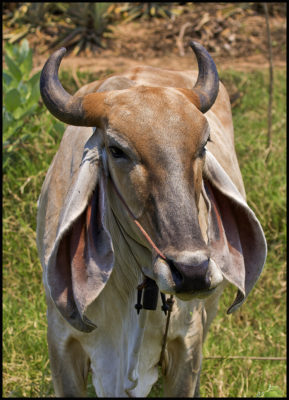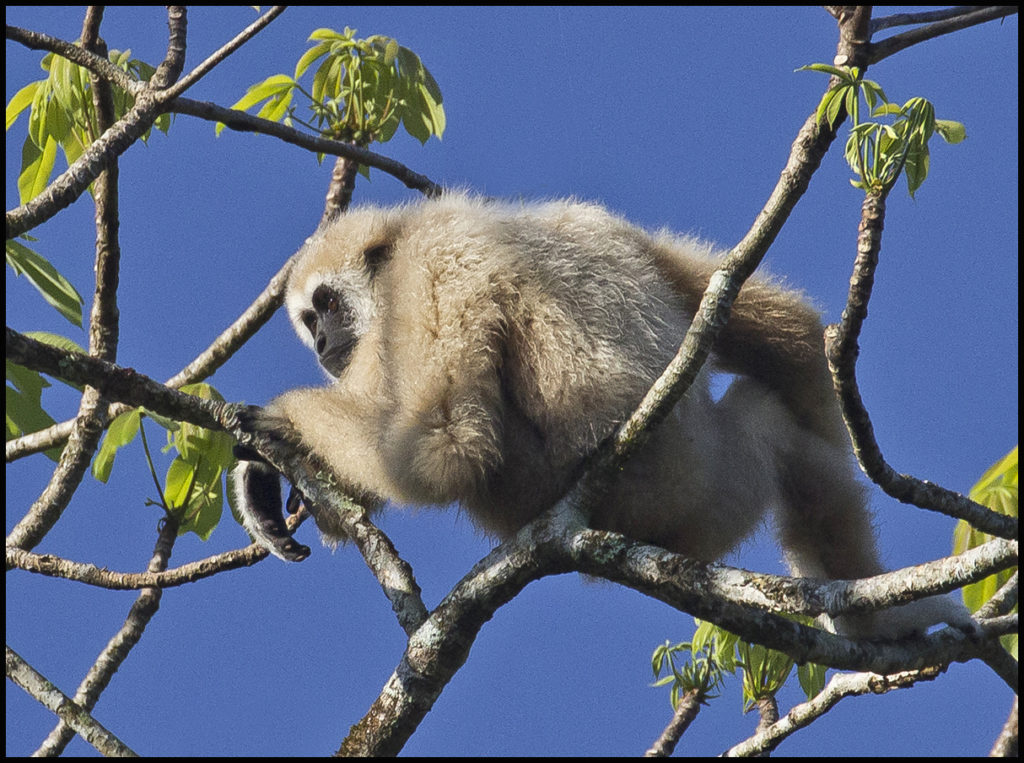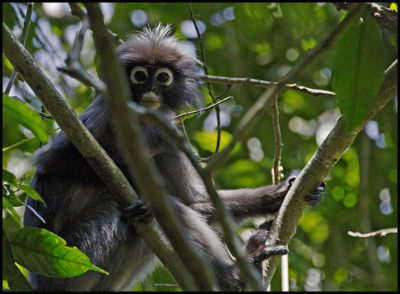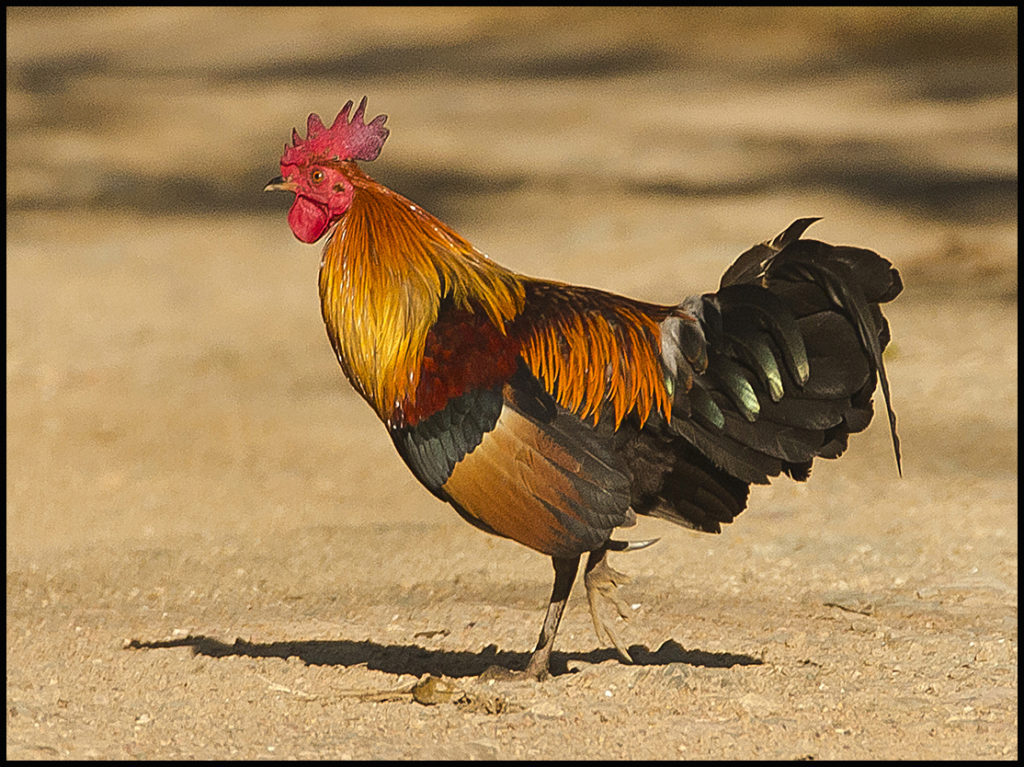
Khao Sam Roi Yot NP
Finally, the mother lode of wildlife, and so little time left to find it! I thought we would never find the iconic wildlife of SE Asia because searching has been so difficult. However, after visiting these southern parks, our faith is restored. We didn’t manage to visit even half of the parks in the south.
Tourism is such big business, especially in the south, the parks are protected more diligently than in the north. Because the mountains are so steep and formidable, the human population has left them relatively pristine. Bananas and coconuts are crowding in, but the parks are popular, so the boundaries are mostly respected. Poaching is always a problem, but the rangers are more effective here.

Kaeng Krung NP. Jungle road leads to a lovely river with swimming hole.
Sadly we were forced by time restraints to turn north. First stop was Kaeng Krung park. Arriving on Sunday, unannounced, the park was deserted. Most of the staff had the day off. I finally found a young man taking a siesta and woke him to make sure it was okay that we were there, and could stay the night in one of their cabins. This is a huge park straddling the central range. Access from the east side is limited, so after swimming in their water hole and finally managing to get the common rose butterfly to stay still long enough to take its picture, we moved on.

In March the temperatures reach the 90’s with high humidity. The swimming hole is a welcome day time relief.

The gorgeous and common rose butterfly is difficult to shoot because it never lands for long.

Every morning the park staff lines up to sing the national anthem and raise the flag.
Next park wasn’t even on our map, but is well worth the detour: Kuiburi National Park. Along the border with Myanmar, this large park protects about 20 groups of wild elephants (about 230 in all). They have armed rangers to prevent poaching, and only allow people in on supervised tours. They can’t protect the pachyderms if they wander into Myanmar, so at the end of the dry period they truck water into the few water holes to make sure some elephants stick around.

Wild Asian elephants, some of the few left.
At the south end of the park is the headquarters and bungalows…and flocks of Oriental Pied Hornbills as well as other exotic (for us) species. In our cabin we had a very vocal Tokay Gecko to keep us awake. They are so wonderful, we didn’t care. These guys are maybe 14 inches long with very strong jaws: (for once we learned this before finding out the hard way!)

Tokay geckos come out at night to sing loudly.

Oriental pied hornbills are easy to spot here.

The basic gecko patrols inside walls as well as outside.

Lineated Barbet female at her nest.

In March all sorts of lovely flowers are blooming.

Common Hoopoe
Just outside the park boundaries is a huge wetland at the end of a reservoir. It’s a bird watchers’ paradise.

Kuiburi wetland.
Gorgeous little weavers were building their hanging basket nests. By the end of March most of the birds are in some stage of nesting activity with some nestlings fledging already.

Baya weaver working on his nest.

Baya weaver male.

Common Iora.

Brahma cows wander into the park. Look at her ears.
We tore ourselves away from Kuiburi, because we’d heard earlier that a great place to see birds is in a huge park, Kaeng Krachan, only a matter of hours from Bangkok.
We got lost on the way to the park, and passed an ape crossing sign. No sooner had I said, “they don’t have gorillas here, what’s with the sign”, than we drove through a large group of Stump-tailed Macaques.

Prime male stub-tailed macaque.
Locals feed them along the roadside, which is a dangerous proposition for the monkeys, but they seemed to be doing well. The short-term storage pouches below their chins were being put to maximum use. These monkeys aren’t as arboreal as their relatives, and feed comfortably on the ground.

Mother stub-tail with baby.

Female with pouch stuffed.
We feared Kaeng Krachan might be swamped with visitors since it was nearing the weekend and not far from Bangkok, but we lucked out. Fortunately, we had made reservations at a terrific resort, Banmaka, about 15K from the park entrance for our last 3 days in Thailand. What an incredible park. First to greet us was a male gibbon lazing in the treetops. And things just got better from there. The birds, reptiles, insects, monkeys, apes and other wildlife could entertain for weeks or months.

Male White-handed gibbon.

Mountain Bulbul. There are many species of bulbul in SE Asia.

Lovely lizard.

Massive numbers of butterflies found in the park.

Another gorgeous butterfly, fairly common in SE Asia.

The very rare Oriental Scops Owls.

Darling little “Booboo”, our name for him.

Craig with Booboo.
Our first day hiking we were followed by a small gibbon. We didn’t know what to think. We had already seen troops in the treetops, of White-handed Gibbons and Dusky Langurs. This little fellow stayed near us and watched the langurs. It was obvious he wanted to play with them, but they stayed out of reach. Later while he was with us we watched a troop of gibbons. After working up his courage, he approached the troop. A couple of young adolescents rushed down shrieking at him and beat him up leaving a nasty gash on his back. He retreated to us, but not before Craig was pelted with gibbon poop. We later learned this four year old fellow was raised as a pet and then abandoned. The park adopted him, but so far the wild gibbons will have nothing to do with him. It’s so sad. He is unbearably cute.

Mom gibbon with young. The wild gibbons would have nothing to do with a captive raised youngster.

Langur mom with baby.

Dusky Langur, sometimes called Spectacled langur.
The next day we hiked at higher elevation. In the early morning light a Great Hornbill landed in a huge tree, far off on a hillside. What an amazing bird.
Saw several of the black phase of the White-handed gibbon at the higher elevation. The blonde phase is more common in this park, but the black phase is more common overall.

Great Hornbill greets the dawn.

Black phase of the White-handed gibbon.
Another interesting bird is the Red Jungle Fowl. We know their domestic descendents are chickens, but the wild variety still wander in many of the parks. Look at those spurs.

Red Junglefowl: the original wild ancestor of our domestic chickens..
After we sort through the pictures from the whole trip, and have a chance to reflect, we’ll try to capture our impressions of the SE Asia area in one more posting. For now it’s farewell to Thailand. For more information and videos of the parks, click the link here.

Farewell to Thailand.
